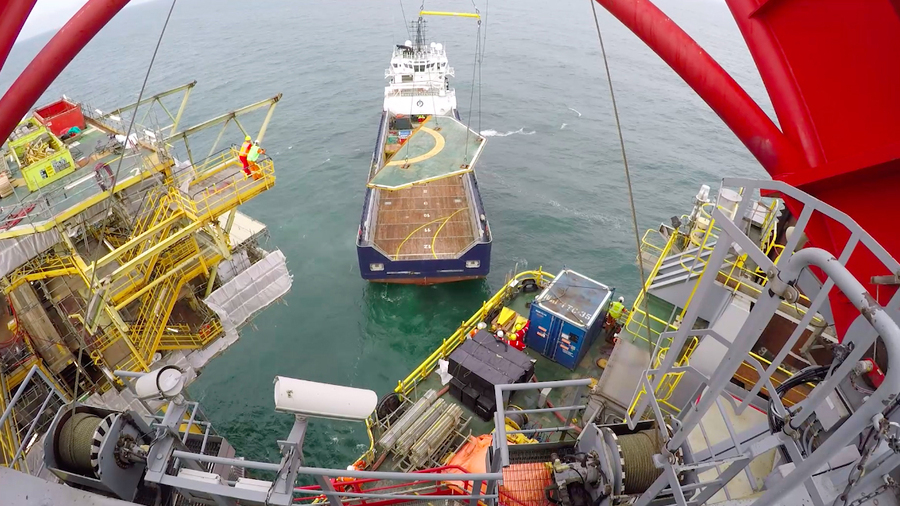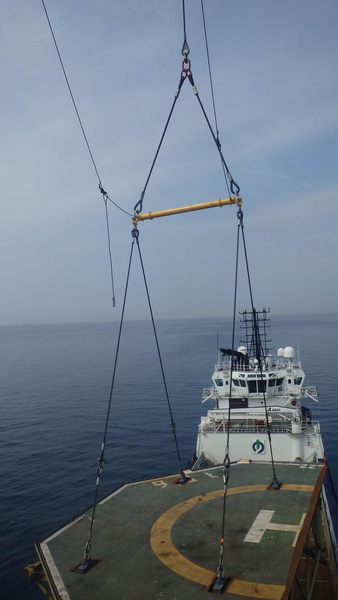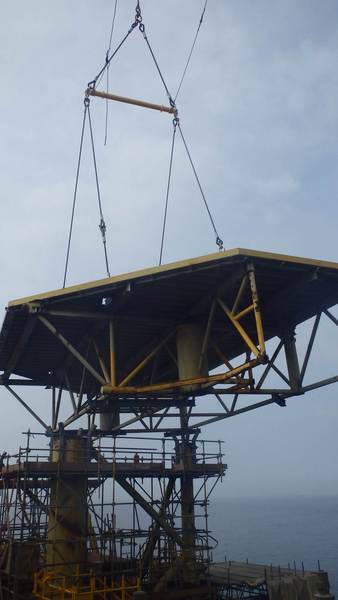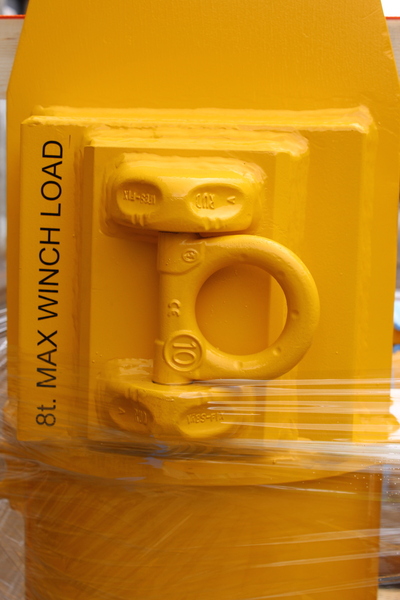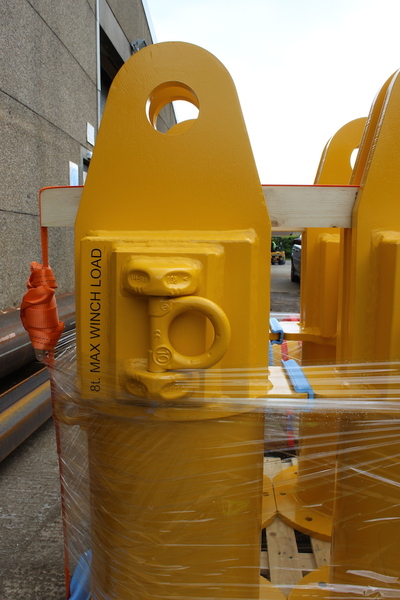Home \ International \ Modulift beams for helipad lifts
Modulift beams for helipad lifts
30/08/2017
Pubblicato da Redazione
Certex (UK) used two modified spreader beams from Modulift’s heavy, off-the-shelf range to lift two nonidentical halves of a helipad onto a vessel from a gas rig in the Dutch Sector of the North Sea recently. The site
Certex (UK) used two modified spreader beams from Modulift’s heavy, off-the-shelf range to lift two nonidentical halves of a helipad onto a vessel from a gas rig in the Dutch Sector of the North Sea recently. The site was approximately 70 miles off the Danish coast. Certex, a supplier of steel wire ropes, lifting products and services to the oil, gas, industrial and renewable markets, accepted a scope of work to design and supply a below-the-hook solution for loading the helipad using a 300t capacity crane aboard a barge. The heavier piece of the pad weighed 89t, while the smaller was less than half the weight at 35t; it was hexagonal in shape and measured 44m sq. when assembled. Interestingly, each piece was removed from the site one at a time (the smallest first) along with its corresponding spreader beam and rigging.
Certex used a MOD 110H at 6m (19 ft.) for the heavier section and a MOD 110 at 6.5m (21 ft.) for the other. The former can lift up to 170t at 11.5m (37 ft.) and lower capacities up to 18m (59 ft.), while the latter provides 110t capacity at 14m (46 ft.) and lower capacities up to 18m (59 ft.). The beams combined with other rigging gear, such as wire rope slings and shackles, also supplied by Certex, to lift the pieces onto a separate supply vessel that shipped them back to port. Different rigging equipment was used with each spreader beam. Above the MOD 110H was a two-leg, 7m-long sling made from 90mm diameter wire rope, while beneath the beam were two two-leg, 16m-long slings made from 64mm diameter wire rope. Above the MOD 110, a two-leg, 8m-long, 64mm sling combined with a pair of two-leg, 16m-long, 56mm slings. All were utilised at 30 degrees.
The beams were sourced from Modulift after modification of the end units. Jason Griffen, technical sales at Certex (UK), explained: “Pad-eyes were required on the side of the end units so they could be connected to winches on the barge crane to control manoeuvring of the helideck during positioning into place. We provided calculations in advance of the project so Modulift could weld the modifications accordingly.”
The modifications were required to eliminate the use of guide ropes and the requirement for personnel to work in proximity of the loads as they were landed on the supply vessel. Further, there was not a lot of margin for error and the modified beams simplified the process. Certex was able to utilise permanent lifting fixtures of both halves of the helipad. Griffen added: “We worked closely with the client’s engineering department to calculate the capacity, type and length of slings required, to complement the spreader beams. We also extracted additional information from the design plans for the helipad, such as centre of gravity.” The rig is among a number of smaller satellite platforms in the area. The rig remains operational but personnel will now access it only by marine transport, not helicopter.
Ultime notizie di

01/07/2021
The compact Sennebogen 613 E telescopic mobile crane proves its flexibility and safety in the mine
Südwestdeutsche Salzwerke AG welcomed a new Sennebogen 613 E...

07/11/2019
COMANSA presents its new 21LC1400 model
A new large-capacity Flat-Top crane

26/09/2017
Robbins Slurry TBM ramps up for Mumbai Metro Line 3
The first of two Slurry TBMs, a rebuilt 6.65 m (21.8 ft) dia...

23/09/2017
The world’s strongest rope for the German Zugspitzbahn
For walkers and winter visitors, there are two ways to ride...

21/09/2017
Modulift beams suspend full scale model fighter jet
Four Modulift spreader beams were used to suspend a full sca...

20/09/2017
A tunnel project with PSC Crane & Rigging
PSC Crane & Rigging, headquartered in Piqua, Ohio, supplied...
Altri International

International
23/11/2024
GPMat International takes delivery of two Raimondi T147s residential development in the South of France
- Official agent of France expands its product lineup with t...

International
22/11/2024
Sarens acquires additional SCHEUERLE SPMT K24 modules
renowned for its expertise in crane rental services, heavy l...
International
22/11/2024
Five WOLFF cranes modernize Oslo’s Ulven district
With a total of five WOLFF cranes of type 7534.16 Clear, Wol...

International
21/11/2024
Kleemann: New compact crusher used for recycling
Impact crusher MOBIREX MR 100i NEO impresses during operatio...
International
21/11/2024
SITECH partners with Royal Engineers to create poppy and demonstrate tech offering
The demostration involved creating a ground-level poppy desi...
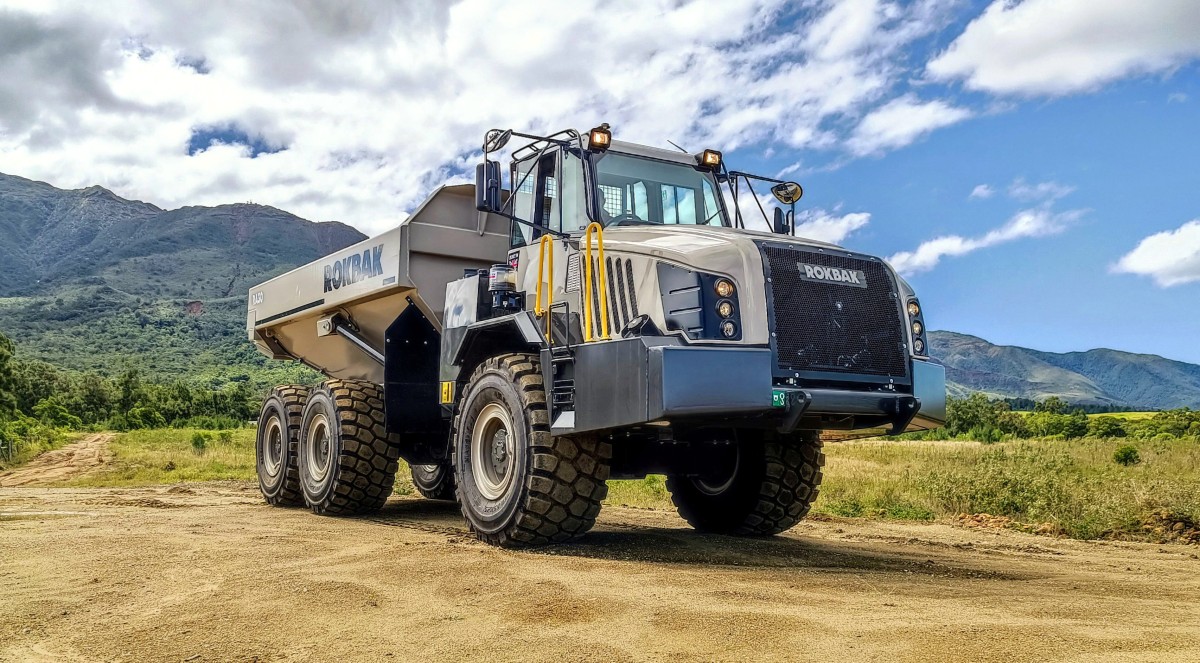
International
20/11/2024
Strong and stable RA30 trucks carry the weight at New Caledonian mine
Three Rokbak RA30 trucks are delivering exceptional durabili...











